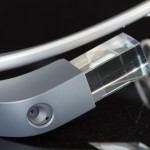 via Shutterstock
via Shutterstock
Technology has allowed medicine to develop by leaps and bounds over the course of time. Sometimes, some technologies wow us simply because they are so cool. A good example of this is a case report that was published in the Canadian Journal of Cardiology in which interventional cardiologists were able to perform an angioplasty with the operator wearing a head mounted Google Glass.
Before an angioplasty is performed, it is necessary for the cardiologist to examine blood vessels for blockages. This procedure is called an angiography. It is an invasive technique where a guide wire is threaded through an artery (either in the wrist or the groin) up to the level of the heart. A dye is injected for visualization of the blood vessels and any occlusions (blockages).
This may be followed by another procedure called an angioplasty, in which a stent is inserted to reestablish blood flow if there is a block.
During these procedures, cardiologists are by necessity looking up and away from the patient towards the monitors that project the image of the heart and the coronary vessels.
But, in the Canadian case report, physicians were able to visualize the vessels of the patient s heart using three-dimensional computed tomography angiography (CTA) rather than the invasive angiography. These images were then projected onto the wearable device that is head-mounted and allows for greater interaction of the cardiologist with the environment and the patient. This removes the need for turning of the doctor's head towards a screen and away from the patient. If a blockage is then identified, then the procedure continues similar to the standard technique, but continuing to use Google Glass for visualization.
The lead investigator, Maksymilian Opolski, MD stated that this case demonstrates the novel application of wearable devices for display of CTA data sets in the catheterization laboratory than can be used for better planning and guidance of interventional procedures, and provides proof of concept that wearable devices can improve operator comfort and procedure efficiency in interventional cardiology. The authors conclude: We believe wearable computers have a great potential to optimize percutaneous revascularization (angioplasty), and thus favorably affect the interventional cardiologist in their daily clinical activities.
Mark Taglietti, head of ICT delivery services and vendor management at London University College Hospitals says, Google Glass represents a step change in technical innovation, wearable technology, and the convergence of personal devices in the workplace. The healthcare applications of Glass are wide-ranging, insightful and impactful, from enabling hands-free real-time access to clinical and patient information, to the transmission of point of view audio and video for surgical research and educational purposes. Glass marks the beginning of a truly remarkable journey for technical innovation within healthcare, enabling providers to improve the delivery of care, as well as overall quality and patient experience.

